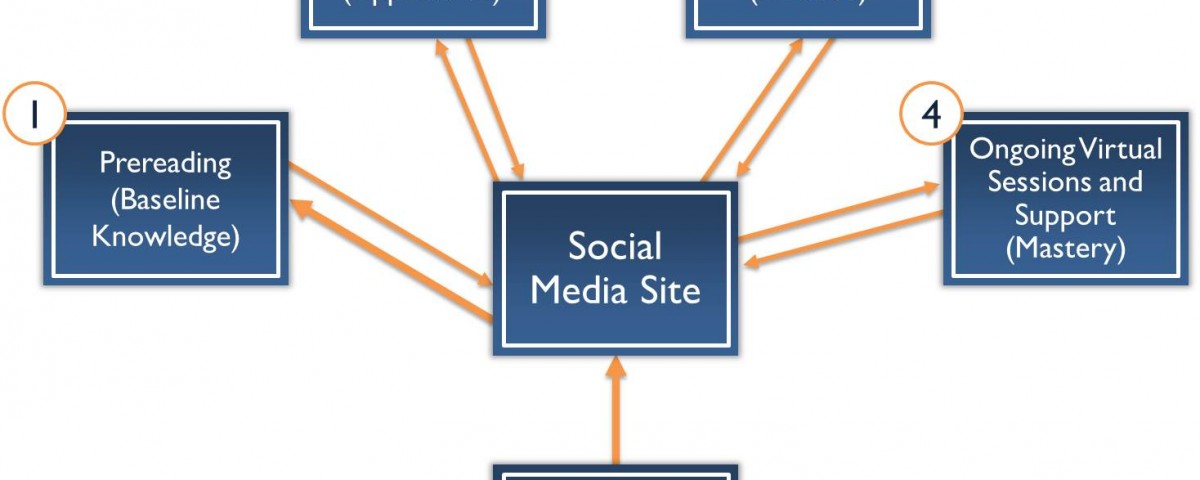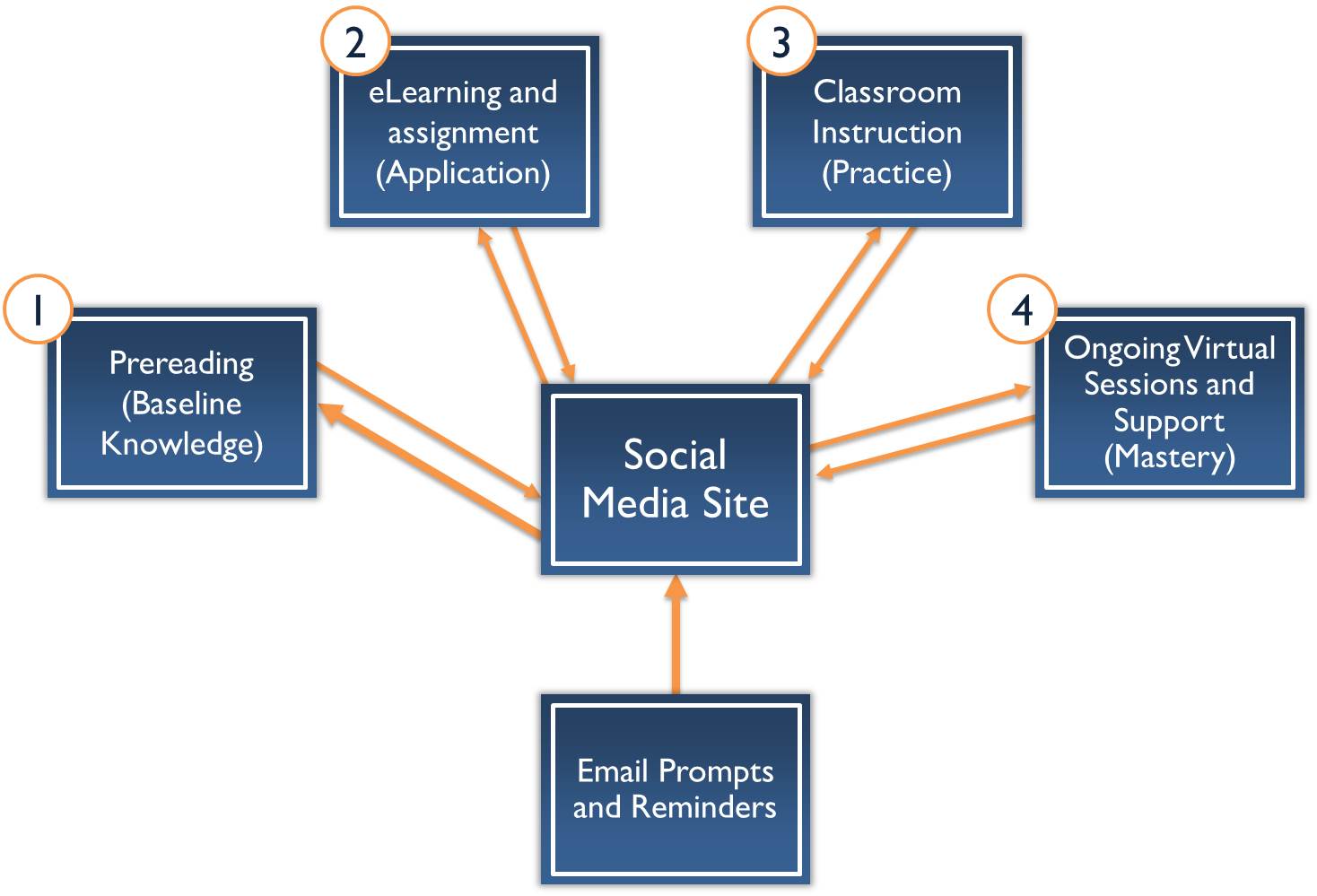A Blended Learning Model for Effective Leadership Development
Heartbleed bug: What you need to know
April 12, 2014
Does Your Organization Crush or Cultivate Creativity?
May 21, 2014Ever since the eLearning Manifesto launch on March 13, I’ve been wondering:
- How well do the courses I’ve developed adhere to its principles?
- What are the best strategies for implementing its principles?
I started to work my way methodically through the principles to identify strategies that we’ve used successfully with our clients. But someone else is already doing that. And I found a more holistic picture was emerging—a model for leadership development that I’ve used successfully for multiple clients, both commercial and government.
A Performance-based Approach (Manifesto Principles 3, 4, 14, 16)
This model emerged from a need to translate leadership principles into specific practices for a manufacturing environment. It was developed from a performance-based perspective, starting with the questions: What must learners be able to do to lead successfully in the work environment? How will we know when leaders are successful? From the answers to those questions, we worked backward to create a structure that guides learners through the following stages:
- Learning new principles and strategies
- Applying these principles and strategies, with feedback
- Practicing these principles and strategies in multiple contexts, with individualized feedback
- Mastering these principles and strategies and integrating them into daily practice
The Blended Model
To come up with this model, we identified the best instructional strategies and technologies to support each instructional goal.
A Central Hub (Manifesto Principles 15, 22)
The central point for the model is a social media site where learners can:
- Get assignments
- Link to courses and resources
- Participate in discussions with others
- Post assignments
Prompts and Reminders
Email is used to welcome learners to the program and point them to the social media site. Regular ongoing emails prompt learners to complete upcoming assignments.
Obtaining Baseline Knowledge
Learners get baseline knowledge on leadership principles and strategies by reviewing prereading articles.
Applying Basic Principles and Strategies (Manifesto Principles 5, 6, 7, 8, 10, 12, 16, 18, 20, 21)
Next, learners take an eLearning course that challenges them to apply basic principles and strategies to a simple case study and get feedback on their choices. The eLearning environment means that the case study must be fairly simple and straightforward, lacking some of the nuances of real life, but it’s a good start in applying basic principles and strategies.
At the end of the eLearning, learners get an assignment to apply what they’ve learned in their own work environments. They may have to analyze their work environments based on the principles that they’ve learned. Or, they may identify and solve a problem, or, look for an opportunity to use new strategies on the job. Learners post their completed assignments to the social media site so the instructor can review them to understand learners’ unique needs and tailor classroom instruction accordingly. Learners bring their completed assignments to the classroom session and continue to work on them there.
Practicing in Multiple Contexts (Manifesto Principles 5, 6, 7, 8, 9, 10, 12, 16, 20, 21, 22)
The classroom session allows learners to practice new skills and knowledge with more nuanced examples and individualized feedback. Learners present the assignments they completed after the eLearning to get feedback and suggestions for moving forward. In this way, they learn while doing real work. In addition, the classroom session includes multiple case studies and simulations that allow learners to experiment with new knowledge and skills and practice applying them in multiple contexts, with individualized feedback.
Supporting Mastery (Principles 11, 13, 15, 16, 20, 21, 22)
After the classroom session, regularly scheduled virtual sessions deepen the learning and support transfer of learning to the job. At this point, responsibility for creating the learning sessions transfers to the learners. They take turns designing, developing, and implementing virtual or in-person sessions to discuss their progress, solve problems, and provide more in-depth information, with assistance from the instructor as needed.
Other support and resources are offered via links to resources, ongoing discussions with peers and the instructor, and event notifications on the social media site. Over time, this site can grow into a Community of Practice that learners can always turn to when they need support or information.
Regular email updates keep learners on track and emphasize key points.
A Flexible Blend
Over the past eight years, this blended approach has proven effective for multiple leadership development initiatives, both commercial and government. In 2010, it received a Bersin Learning Leaders award. In addition to adhering to almost all of the eLearning Manifesto’s principles, this blended approach allows leadership development to unfold as a process, as opposed to a one-time event, and it slowly transfers the responsibility for learning to the learners, empowering them to continue their development.
What strategies have you found effective for leadership development? What principles guide the design of your training programs?










